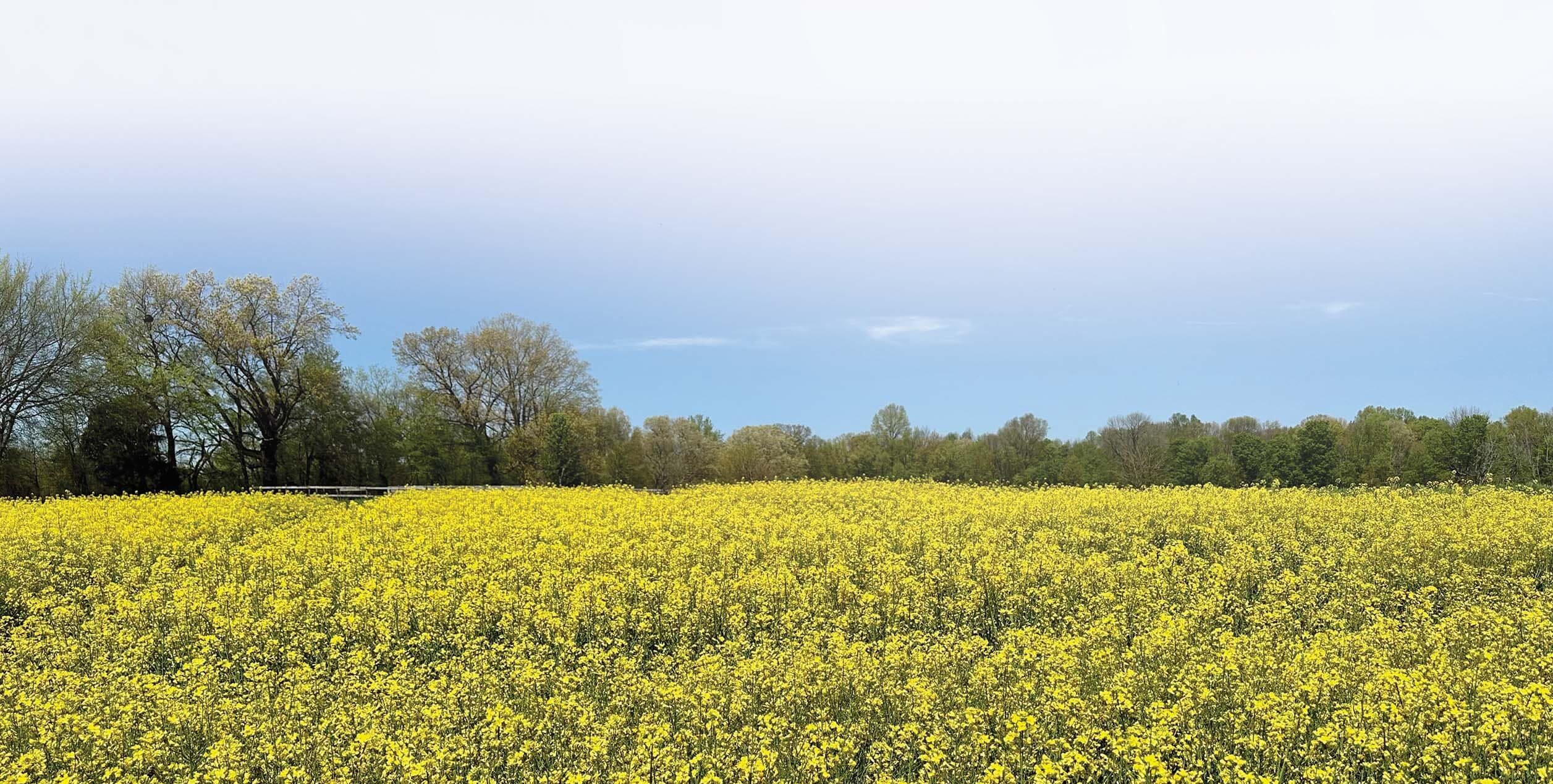Southern U.S. tests canola as a double crop
Three big companies have joined forced to introduce winter canola as a double crop for soybean and cotton growers in the southern United States. Corteva provides the seed. Bunge works with the farmers and processes the seed into oil and meal. Chevron makes the oil into renewable diesel.
Cotton and soybeans represent the typical two-crop rotation in the target states of Louisiana, Tennessee and Mississippi. Winter canola, as the plan goes, is a go-between – a cover crop that captures carbon and provides a promising new market. Farmers will plant canola in late September, early October and harvest in the spring.
“This is a particularly exciting doublecropping system,” says Tom Greene, senior director of external innovation investment at Corteva Agriscience. “Winter canola provides the attributes of a cover crop with significant value capture.”
After a small pilot project last winter, the program launched this fall with a
set of growers under grain purchase contract with Bunge. “We are targeting up to 8,000 acres with broader contract opportunities expected for the 2024-25 growing season,” Greene says. “We will scale up over the coming years. There are 10 million acres available for a double-cropping option like this.”
“This is a particularly exciting
double-cropping system.
Winter canola provides the
attributes of a cover crop with
significant value capture.”
— Tom Greene
Corteva brought in winter canola cultivars from its European program. Through a collaboration with Kansas State University, Corteva identified two promising hybrids for this project. Next step, Greene says, will be a seed product development program in the Southern U.S. to more precisely select traits and agronomic characteristics for best performance in the region.
Winter canola yield potential for the target states is 30 to 40 bu./ac., Greene says.
After harvest, Bunge will process the canola at its soybean and softseeds facility at Destrehan, Louisiana. From there, the oil goes to Chevron’s Renewable Energy Group refinery at Geismar, Louisiana.
Chevron is expanding the Geismar facility to 340 million gallons per year, up from 90 million currently. The expansion should be operational by 2024.
Canola oil has a good fit for Chevron’s renewable diesel program. “At Chevron, we definitely do evaluate feedstock based on carbon intensity score,” says Ross Allen, external affairs advisor for Chevron.
“The advantage for canola really comes down to oil content in the seed.” Canola seeds are 42 to 45 per cent oil. Soybeans are around 20 per cent oil. Chevron also likes that this double crop of canola is a new source of feedstock, so not taking away from current food uses. “Because this is a new second crop for these growers, it entirely eliminates the food versus fuel debate,” Allen says.
Demand for biofuel currently outstrips supply, and demand will continue to go up. “We wake up every morning short of feedstock,” Allen says.
“This winter canola project is a nice convergence of opportunity and necessity,” Greene adds.





